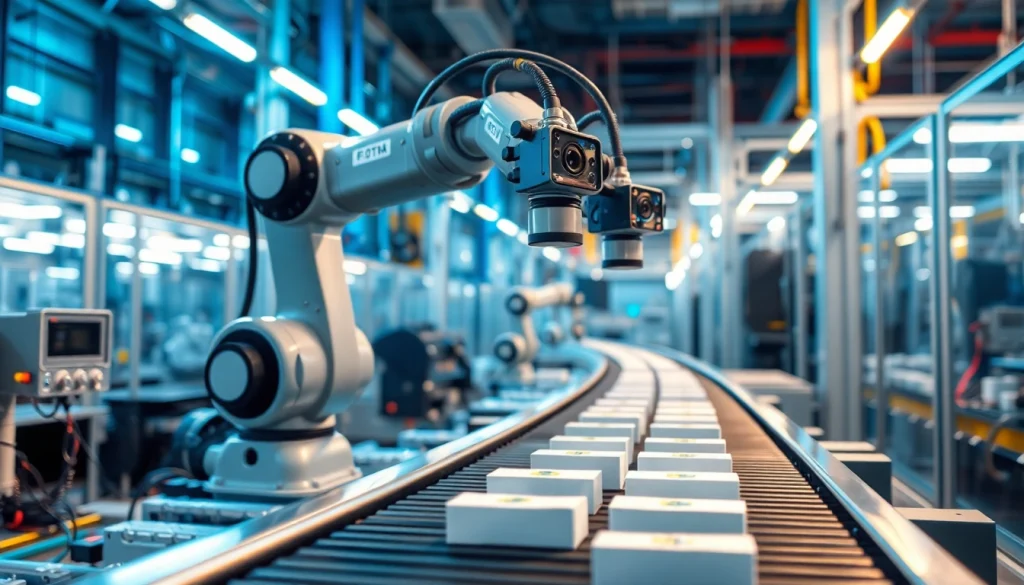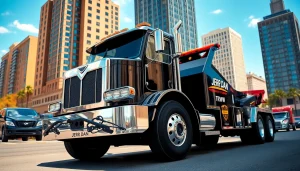
What is Machine Vision?
Defining Machine Vision
Machine vision refers to a technological framework designed to enable machines to interpret and respond to visual data, much like a human would. It combines advanced imaging systems, artificial intelligence, and software algorithms to process and analyze images captured by cameras and sensors. The primary objective is to automate visual inspection and analysis, facilitating accuracy and speed in various applications such as quality control, assembly, and navigation in robotics. Machine vision systems are widely used in industries such as manufacturing, logistics, and healthcare to streamline processes, maintain operational efficiency, and minimize human error. You can learn more about machine vision applications and technology at Sciotex.
How Machine Vision Works
The operational framework of machine vision can be broken down into several critical stages:
- Image Acquisition: The first step involves capturing images with cameras and sensors. These devices can range from standard cameras to specialized sensors that can detect different wavelengths of light.
- Image Processing: Once the images are captured, they undergo processing where algorithms apply various techniques to enhance the images and prepare them for analysis. This may include noise reduction, normalization, and other transformations.
- Analysis: The processed images are analyzed using sophisticated algorithms to identify patterns, features, and anomalies. This is where machine vision significantly differentiates itself from simple image processing, as it enables machines to make decisions based on visual information.
- Decision-Making: Depending on the results of the analysis, the system can trigger actions, such as sorting products, alerting operators about defects, or adjusting manufacturing parameters.
- Feedback Loop: Many machine vision systems incorporate a feedback loop to continually learn and adapt based on new visual data, enhancing accuracy and performance over time.
Key Technologies in Machine Vision
The backbone of machine vision comprises several critical technologies that enhance its performance and capabilities:
- Cameras and Sensors: High-resolution cameras and various sensors, such as infrared and line-scan, are crucial for capturing quality images.
- Lighting Systems: Proper illumination is essential to highlight features accurately and reduce shadows and reflections that could impair image quality.
- Image Processing Software: Specialized software utilizes machine learning algorithms for image recognition and analysis, improving efficiency in decision-making.
- Connectivity Solutions: Integrating machine vision systems with existing manufacturing and IT infrastructure requires robust connectivity solutions to facilitate data collection and transmission.
Applications of Machine Vision
Quality Control in Manufacturing
One of the most prevalent applications of machine vision is in quality control. Automated systems can swiftly inspect products for defects or variations from specifications. Furthermore, real-time analysis allows for immediate corrective actions, reducing waste and ensuring that only compliant products reach the market.
For instance, in the automotive industry, robots equipped with machine vision can analyze welded joints or paint finishes, identifying defects that human inspectors might miss due to fatigue or distraction. This technology not only ensures product quality but also enhances the overall efficiency of production lines.
Automating Assembly Processes
Machine vision plays a critical role in automating complex assembly processes. By providing real-time situational awareness, these systems enable robotic arms to correctly identify and place components within an assembly line. Such automation minimizes the chance of human error, speeds up production rates, and reduces physical strain on human workers.
A notable case involves electronics manufacturing, where machine vision systems guide pick-and-place robots to recognize and accurately position tiny electronic components on circuit boards, ensuring high precision during assembly.
Inspection and Defect Detection
Inspection is a vital function of machine vision systems that extends beyond manufacturing into sectors such as food safety and pharmaceuticals. For instance, machine vision can be utilized to inspect food products for contaminants or foreign objects, ensuring health standards are met and providing consumer safety.
In pharmaceuticals, machine vision is deployed to verify that all products in a batch are correctly labeled, correctly filled, and sealed before packaging—an essential process to adhere to regulatory requirements.
The Benefits of Implementing Machine Vision
Improving Efficiency and Accuracy
Implementing machine vision significantly enhances operational efficiency and accuracy. Machines can inspect and analyze products faster than human operators, processing thousands of images per minute. This not only speeds up production cycles but also ensures a higher degree of accuracy in inspections and decision-making processes.
Statistical analyses of organizations adopting machine vision technology often indicate a reduction in error rates and production downtime, demonstrating its potential to optimize operations across various sectors.
Reducing Operational Costs
Although the initial investment in machine vision systems can be substantial, the return on investment (ROI) typically manifests through lower operational costs. Automated inspection reduces the need for extensive human labor in repetitive tasks, minimizes waste from errors, and speeds up the manufacturing process. Over time, businesses can expect substantial savings, especially in high-volume production environments.
Enhancing Product Quality
The impact of machine vision extends to product quality—companies can achieve higher standards consistently. Real-time feedback from machine vision systems allows for immediate adjustments in the manufacturing process, ensuring products meet stringent quality specifications. Quality assurance becomes proactive rather than reactive, reinforcing customer satisfaction and brand reputation.
Challenges in Machine Vision Implementation
Technical and Financial Barriers
Despite the advantages, organizations may face challenges when implementing machine vision. Technical barriers could involve the complexity of integrating these systems into existing workflows. Businesses might also encounter financial hurdles, as the cost of high-quality cameras, software, and maintenance can be significant.
To mitigate these challenges, organizations must conduct thorough assessments of their needs, budget constraints, and potential ROI to make informed decisions regarding the adoption of machine vision technology.
Integration with Existing Systems
Integrating machine vision systems into a pre-existing manufacturing environment can prove challenging, particularly for legacy systems. Success relies on compatibility and the ability to harness existing infrastructure without incurring extensive downtime or overhaul expenses.
Leveraging expertise from integration specialists and adopting modular machine vision systems can facilitate smoother implementation while preserving continuity in operations.
Ongoing Maintenance and Support
Machine vision systems require consistent maintenance and monitoring to ensure their effectiveness. Regular updates to software, calibration of cameras, and troubleshooting any technical glitches are essential for sustained performance. Organizations must consider the long-term maintenance aspects of their machine vision system, including the availability of skilled personnel and technical assistance.
The Future of Machine Vision
Emerging Technologies and Innovations
The landscape of machine vision is continually evolving, with emerging technologies driving new applications and capabilities. For instance, advancements in artificial intelligence (AI) and machine learning have significantly improved the accuracy of image analysis and decision-making processes. AI-powered systems can learn from historical data, adapting to new environments and identifying defects with increased precision over time.
Trends in Industry Adoption
As industries recognize the benefits of integrating machine vision systems, adoption rates are on the rise. Innovations such as 3D imaging, hyperspectral imaging, and embedded vision are gaining traction across various sectors. Industries such as automotive, healthcare, and electronics are at the forefront, paving the way for broader acceptance and implementation.
Impact of AI and Machine Learning
AI and machine learning are reshaping the future of machine vision by enabling systems to perform complex analyses that were previously challenging to achieve. These technologies can optimize inspection processes, manage large datasets, and enhance real-time decision-making capabilities. The collaboration between machine vision and AI is set to revolutionize industrial automation, driving efficiency and innovation.






